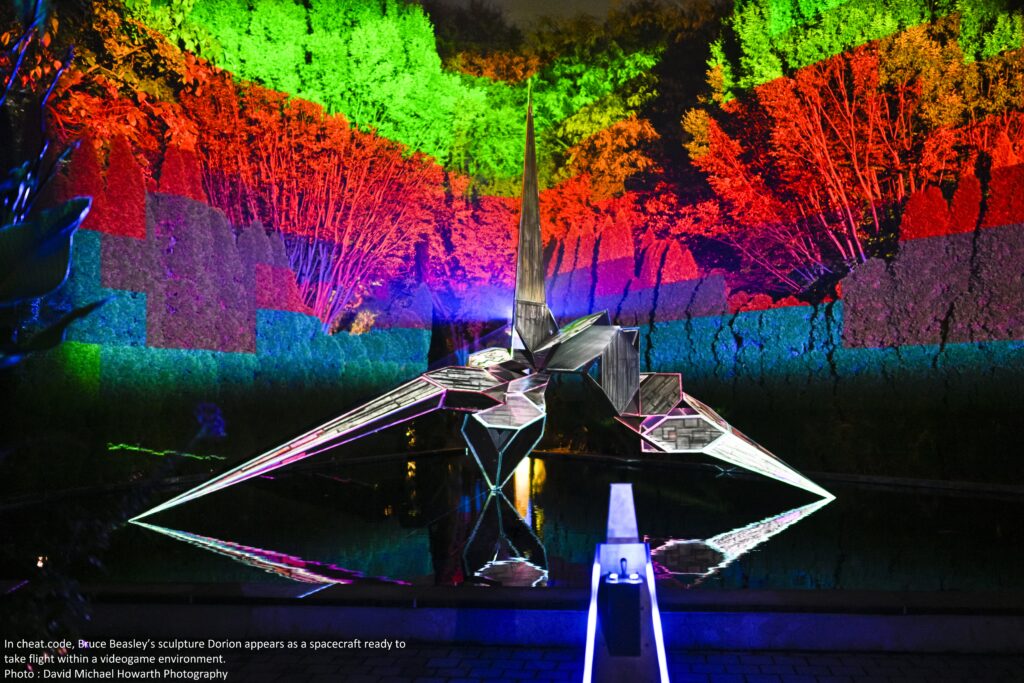“Night Forms” Ignites After-Dark Exploration at Grounds For Sculpture
Despite its moniker as “The Garden State,” New Jersey is the most densely populated state in the U.S. Driving its major roadways, such as the New Jersey Turnpike and Parkway, you’re more likely to be flashed a “Jersey bird” by an aggressive driver than catch a glimpse of the state’s official feathered friend, the American Goldfinch. Fortunately, there are pockets of solitude where people can escape to spread their wings and seek a little Zen. Take a deep breath, and step through the gates to Grounds For Sculpture (GFS).
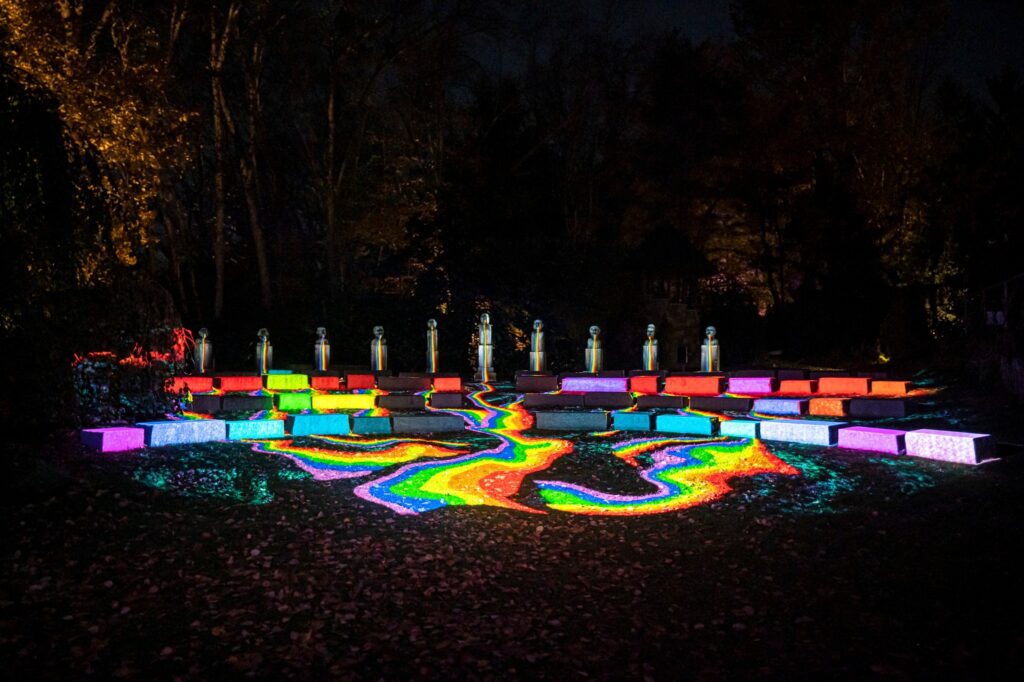
Located in Hamilton Township, just east of the capital of Trenton, GFS is a 42-acre nonprofit sculpture park, arboretum and museum. Open since 1992, it contains more than 300 contemporary sculptures among a constantly changing landscape. It’s a sight to behold during the spring through fall seasons, but once the darkness of winter sets in, attendance traditionally dips. After the state’s COVID restrictions were lifted, GFS was looking for a way to jumpstart attendance by using its outdoor space during the “quiet season,” according to GFS Executive Director Gary Garrido Schneider. The result was “Night Forms,” a site-specific multi-sensory experience, currently in its third and final year. This after-hours display is a synthesis of light, sound and video projection mapping, where each illuminated installation offers a unique encounter with either a work of art or a feature from the horticultural collection. The installations are located along the ground’s Main Loop path and patterns of light are syncopated to original soundtracks by electronic musicians. GFS partnered with creative studio Klip Collective on the project as a way to encourage visitors to explore the grounds after dark. The exhibition runs through April 7, 2024.
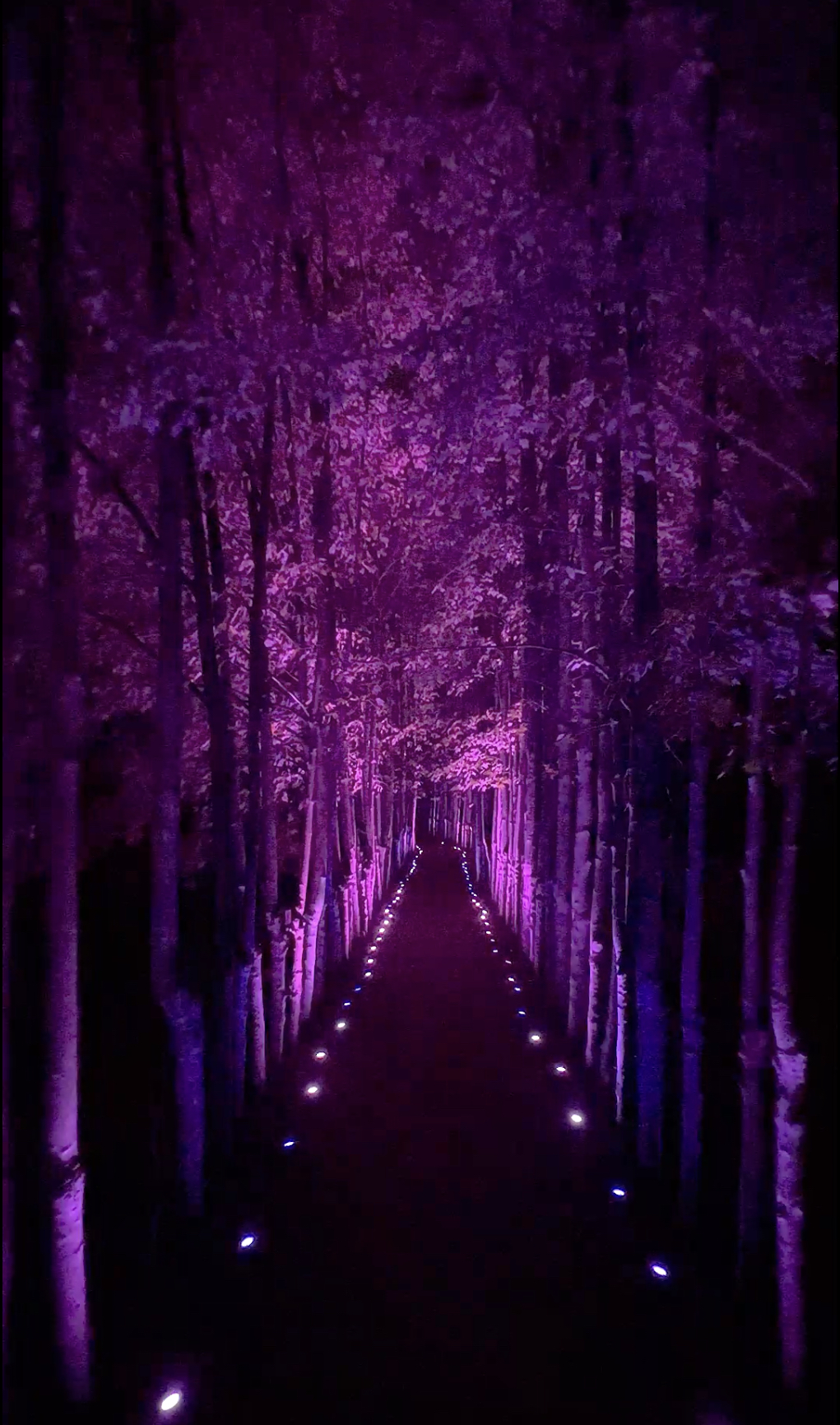
“One of our goals with ‘Night Forms’ was to attract a new audience, and we have been able to do that successfully,” explained Schneider. “During the first two years of ‘Night Forms’ and our collaboration with Klip Collective, we had over 90,000 visitors, of which over half were first-time Grounds For Sculpture visitors. It has been a great way to advance the work we are doing…making contemporary art and horticulture accessible to a wide audience.”
The exhibit moves beyond the popular technique of projection mapping on the side of a flat structure; the work in “Night Forms” combines lighting fixtures, projection mapping and music to create site-specific entertainment. Klip Collective scans the various sculptures at GFS that it illuminates and uses 3-D models to create content and lighting effects that are projected back onto each sculpture or arboreal environment, according to Ricardo Rivera, founder and creative director of Klip Collective.
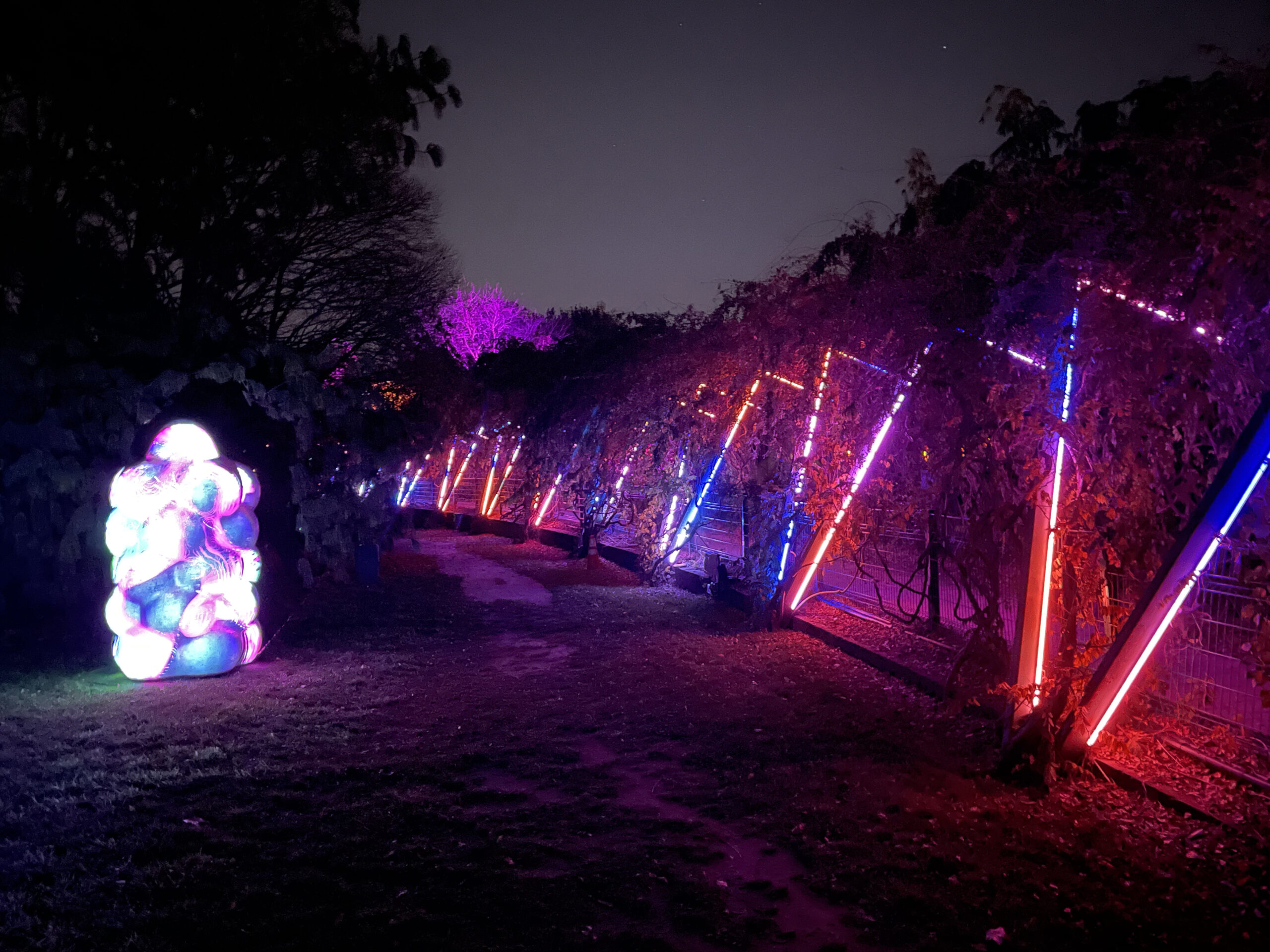
“There’s the technical, formal aspect of what we do, but there’s also the artistic, fuzzy side,” explained Rivera. “The super-articulated light helps us reimagine these sculptures through illuminated pixels. Half the work here is not projection; there are actual lighting fixtures in the gardens and on the grounds. What has changed over the last few years is pixel-mapping light and using fixtures. We use a lot of Gantom light fixtures and LED tape, but the LED tape is either in tubes or in flex neon, so they’re diffused in interesting ways. Even the PARs [parabolic aluminized reflectors] that we have are all pixel-mapped. Just like in projection mapping, I have a map, and then I use video to drive these lights. It’s the movement and color where it stops being light and becomes the art piece.”
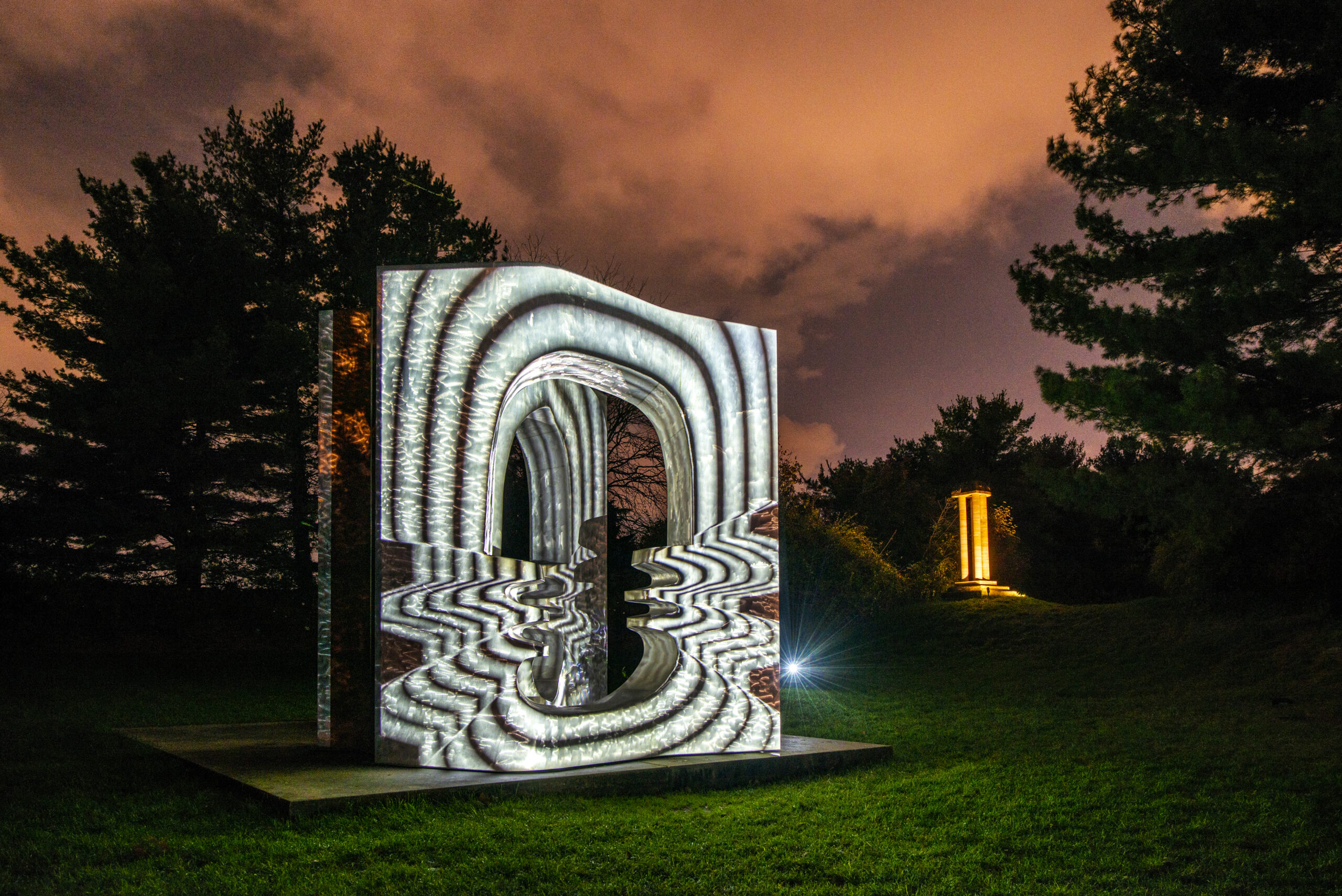
Due to the varying sizes, shapes and materials involved, each work of art offered a unique challenge. Rivera cited rem, a new perspective on Elizabeth Strong-Cuevas’ Arch II, Set II sculpture, as being “insanely difficult” to complete. The shape of the 12-ft by 11-ft by 13-ft aluminum sculpture required three projectors the year it debuted, with that number reduced to two by the second season. While Rivera said that each sculpture and space informs the content, the inspiration gathered from GFS works are ever-evolving, resulting in new creations. During the exhibition’s debut, artist Bruce Beasley’s Dorion was designed to look like a record cover, but in 2024, the artwork was re-imagined into cheat.code—a spaceship in a video-game environment.
Environmental and technical obstacles added to the artistic challenges. There were instances where Rivera could not complete an installation because buried lights ended up below the sea-level line; rain resulted in flooding, with the lights submerged in standing water. As for overcoming technical hurdles, Rivera added, “I’m an artist, so I like things that I can afford,” which resulted in a significant amount of creative hacking. One example is Klip Collective’s use of PixLite, from Advatek Lighting in Australia, to aid in pixel mapping. PixLite was initially designed as Art-Net-controlled light boards for people who enjoy erecting lighting displays on their houses during the holidays. “We realized that they were a very affordable board to do multi-universe DMX through,” said Rivera. “They go over Ethernet, and you can just talk to it. Once we figured out using those, it opened up our world. There are other ways you can do it off-the-shelf, but they can be obtuse—you have to use specific software or hardware. We get the board, we set up the power bricks and put them in enclosures that can withstand the elements. It’s all stuff that’s off-the-shelf, but we put it all together in odd ways to make it work.
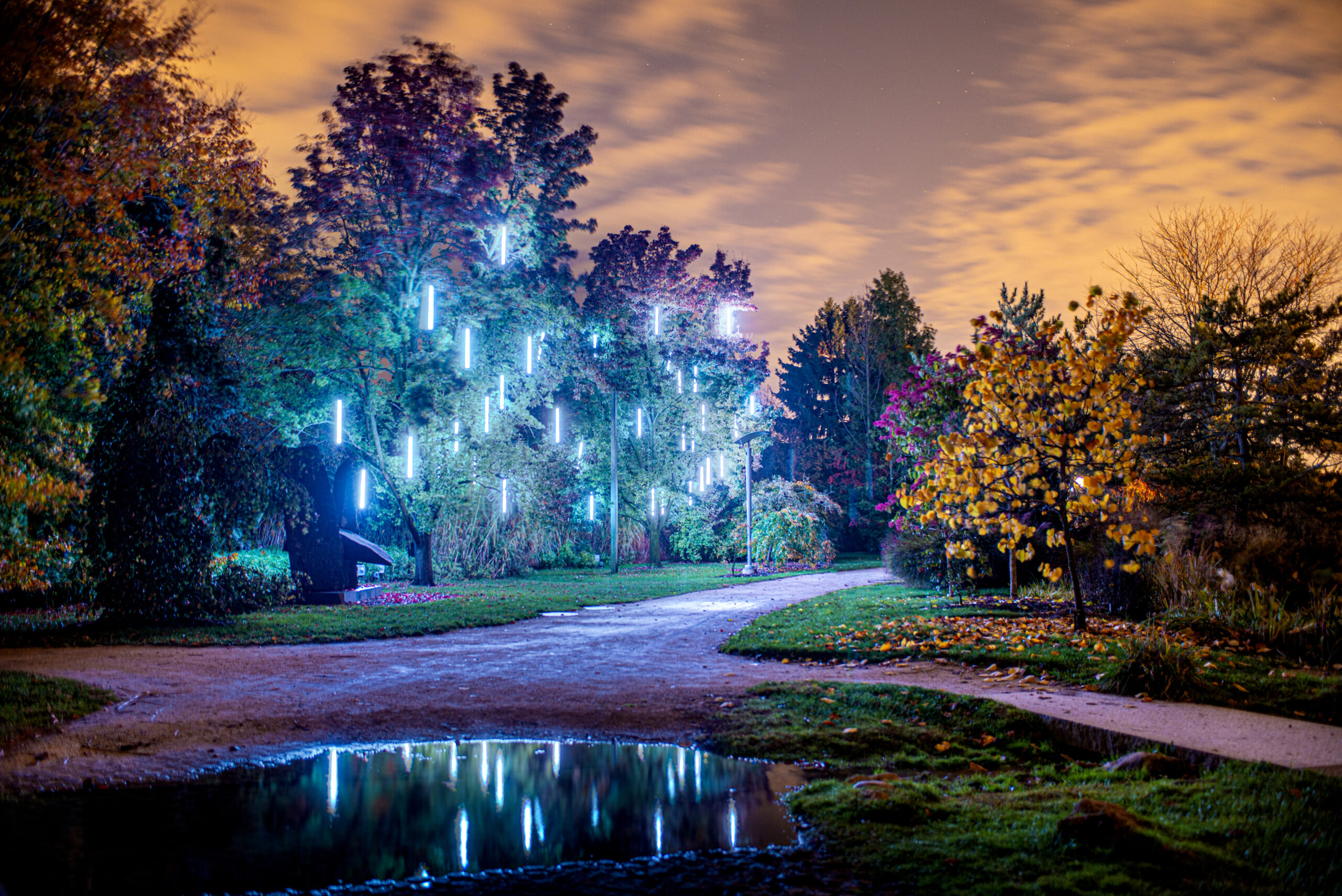
Part of the exhibition’s popularity comes from a balanced approach of nurturing new experiences from pre-existing works while harnessing the nature that surrounds it. There is no better example of this harmony than Froghead Rainbow, which is featured in GFS’ Amphitheater. The space includes waves of light washing over massive granite blocks intended for seating, with the busts of Michelle Post’s The Oligarchs overlooking the festivities. Rivera flipped the common theater experience of entering a venue and sitting down to watch a performance on stage by having visitors enter the space and looking into the “crowd.” Rivera explained that he was seeking a dream-like feeling and wanted guests to ask themselves, “What’s happening here?” One element of the piece’s dreamy soundtrack is a chorus of croaking frogs, which was recorded on-site at GFS.
“Nature is such a big part of our work,” Rivera said. “One of the best pieces here has no sculpture in it. restart in Red Maple Allée at the end of ‘Night Forms’ has more than 200 lights pointing up. The mapping and the movement of the lights going up the trees is phenomenal. Those were Gantoms, which I love because they are so rich in color, really bright and small. We had tons of them. And it created super-immersive chases and movements that are stunningly beautiful when visitors view it from both inside and outside the Allée.”
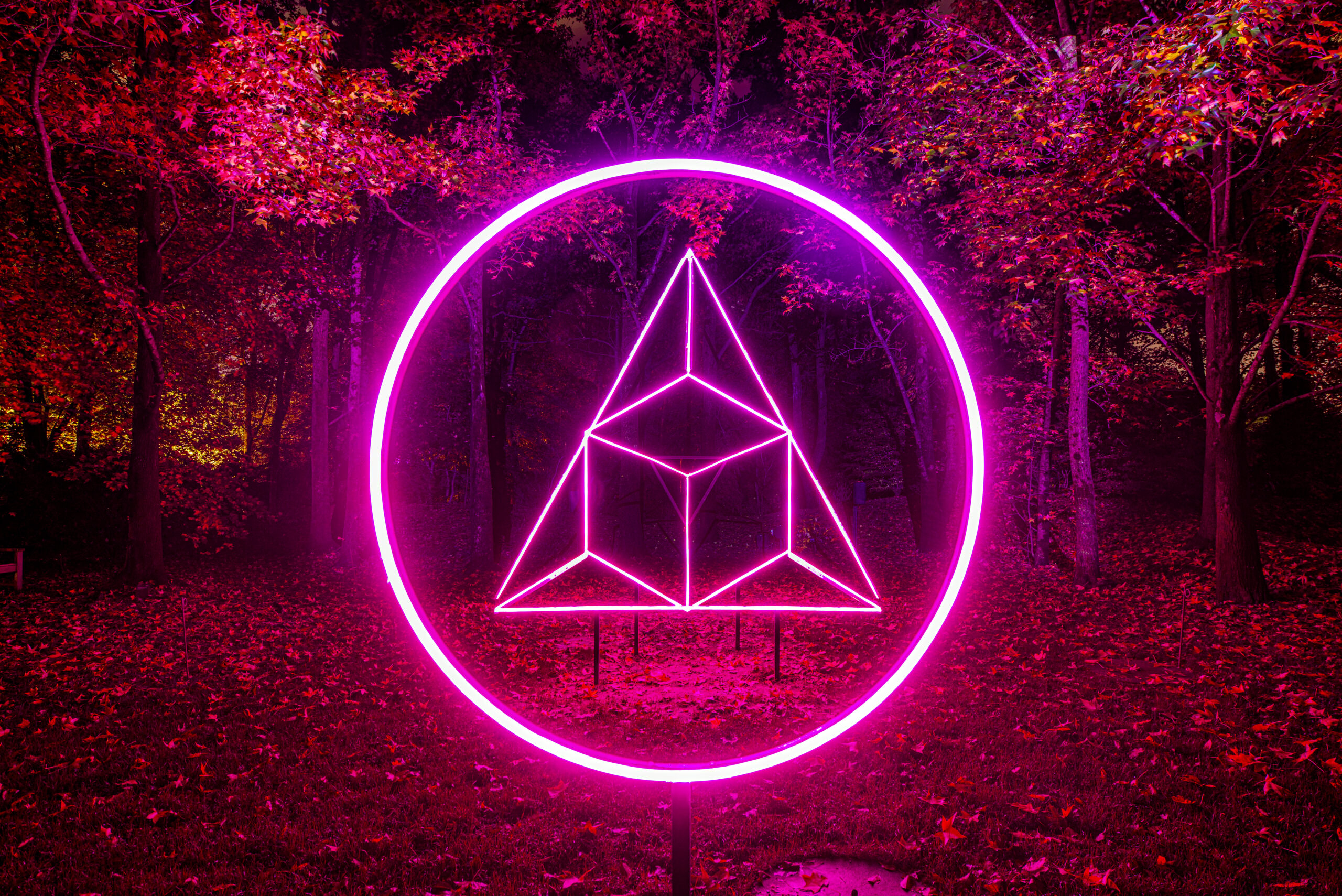
For dream.glitch, Rivera called upon one of the laws of the natural world to provide a lighting solution. LED tape was placed inside 1-meter and 2-meter tubes and hung from trees to create geometric lines of light within nature. But when keeping the fixtures straight proved to be difficult, Rivera pivoted to “dead-hanging” them, allowing gravity to do the work and the evening breeze to rock the lights, thereby providing an added level of serenity. “You always have to keep in mind that what we are projecting on, or the environment where we are placing our fixtures, is just as important as the content that we are projecting,” Rivera acknowledged.
With infinite.wave, Rivera stepped into the role of sculptor in addition to his lighting design duties. “I was very fortunate to have the opportunity to design and create my own work—it’s a sculpture, it’s made of light, there’s movement. I pixel-mapped it, but you have to stand in a certain spot where it all comes together. For me, it’s the gem of the whole show. I can projection map anything, but now I want to make the thing that I’m projecting on. I get bored, so I have to evolve and change; keep pushing and trying new things. Trying my hand at a sculpture in this environment was a fantastic experience.”
THE DESIGNER | Ricardo Rivera, the creative director and founder of Klip Collective, is a site-specific installation artist and pioneer of projection mapping.


